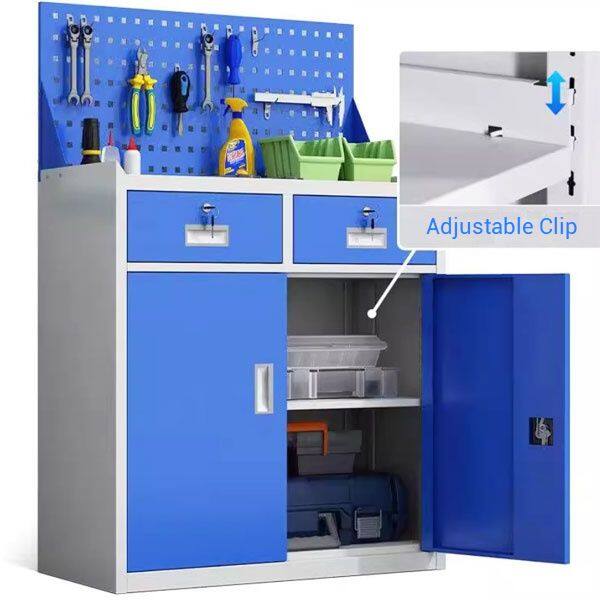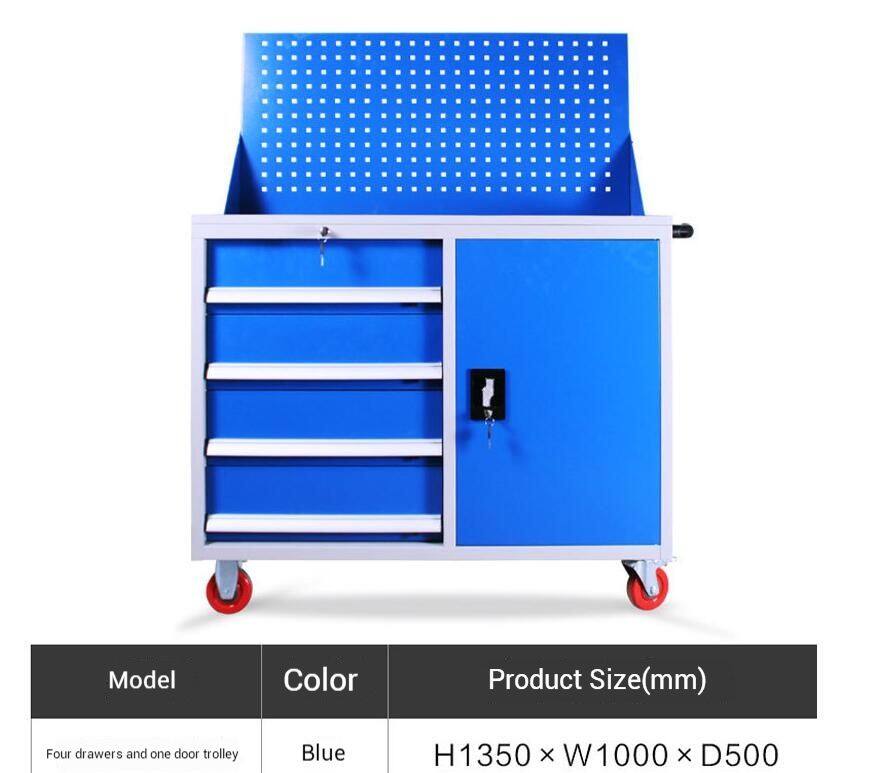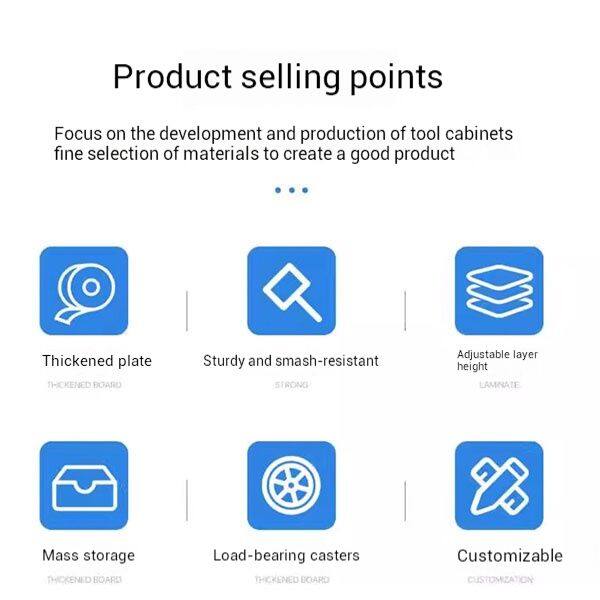-
 Sarah
Hi there! Welcome to my shop. Let me know if you have any questions.
Sarah
Hi there! Welcome to my shop. Let me know if you have any questions.
Your message has exceeded the limit.

How to Improve Tool Organization in Your Warehouse with Rolling Tool Carts
2025-10-28 17:05:04
Transforming Warehouse Tool Management Efficiency
In today’s competitive logistics landscape, effective warehouse tool organization has become a critical factor in operational success. Warehouse managers face daily challenges in maintaining tool accessibility, accountability, and efficiency across vast storage facilities. Rolling tool carts represent a strategic solution that revolutionizes how warehouses manage their tool inventory, streamline workflows, and enhance overall productivity. This comprehensive guide explores proven strategies to optimize your warehouse tool organization using mobile storage solutions.

The Warehouse Tool Management Challenge
Modern warehouses operate under immense pressure to maximize efficiency while minimizing operational costs. Tool management challenges significantly impact warehouse performance:
Tool retrieval delays: Workers spend valuable time searching for equipment across multiple warehouse zones
Inventory management issues: Poor tool tracking leads to losses, misplacement, and replacement costs
Workflow disruptions: Unavailable tools delay critical warehouse operations
Safety concerns: Disorganized tools create workplace hazards and injury risks
Space utilization inefficiencies: Fixed storage solutions waste valuable warehouse space
Industry studies reveal that warehouse workers lose approximately 12-15 minutes daily searching for tools, translating to over 60 hours annually per employee – a significant productivity drain that impacts bottom-line results.
Rolling Tool Carts: The Warehouse Organization Revolution
Strategic Implementation Framework
1. Warehouse Zone Analysis and Tool Mapping
Before implementing rolling tool carts, conduct a comprehensive warehouse analysis:
Zone-Based Tool Classification
Receiving areas: Tools for unpacking, inspection, and initial processing
Storage zones: Equipment for inventory management, labeling, and organization
Picking stations: Tools for order fulfillment, packing, and preparation
Shipping departments: Equipment for final processing, labeling, and dispatch
Maintenance sections: Tools for equipment repair, facility upkeep, and safety
Tool Usage Pattern Analysis
| Tool Category | Usage Frequency | Storage Priority | Cart Placement |
|---|
Box cutters/utility knives | Daily | High | Multiple zones |
Measuring devices | Daily | High | All stations |
Labeling equipment | Daily | High | Shipping/receiving |
Repair tools | Weekly | Medium | Maintenance areas |
Safety equipment | As needed | Variable | All zones |
2. Rolling Tool Cart Configuration Strategies
Based on the multi-drawer designs shown in reference images, warehouse tool carts should feature:
Optimal Drawer Configuration
Five-drawer systems: Comprehensive tool categorization for diverse warehouse needs
Progressive depth design: Shallow top drawers (2-3 inches) for small items, deeper bottom drawers (8-12 inches) for bulky equipment
Weight distribution strategy: Heavy tools in bottom drawers for stability, frequently used items in top drawers for accessibility
Customizable dividers: Flexible compartment creation adapting to changing warehouse requirements
Warehouse-Specific Mobility Features
Heavy-duty casters: 5-6 inch polyurethane wheels supporting 500+ lbs loads
360-degree rotation: Swivel casters enabling tight warehouse navigation
Locking mechanisms: Secure positioning during tool retrieval and usage
Floor protection: Non-marking wheels suitable for various warehouse flooring surfaces
3. Advanced Tool Organization Systems
Categorization Methodologies
By Operational Function
Receiving tools: Box cutters, utility knives, measuring tapes, inspection equipment
Storage equipment: Label makers, inventory scanners, organization tools, marking devices
Picking tools: Order pickers, packing equipment, safety gear, cutting tools
Shipping supplies: Tape dispensers, labeling tools, security devices, strapping equipment
Maintenance tools: Repair kits, lubrication supplies, safety equipment, diagnostic tools
By Usage Frequency and Priority
Critical daily tools: Most frequently accessed items in top drawers with clear labeling
Regular weekly equipment: Medium-frequency tools in easily accessible middle drawers
Occasional monthly supplies: Less frequently used items in organized bottom drawers
Seasonal equipment: Specialized tools stored separately but marked for easy access
Warehouse Workflow Optimization Strategies
1. Strategic Cart Placement and Distribution
High-Traffic Area Positioning
Workstation proximity: Position carts within 10-15 feet of primary work areas
Intersection points: Central locations serving multiple warehouse zones efficiently
Break area access: Convenient tool availability during employee rest periods
Training station integration: Dedicated carts supporting new employee training programs
Mobile Tool Distribution Networks
Zone-specific carts: Dedicated rolling carts for different warehouse functional areas
Shared resource stations: Mobile carts rotating between high-demand locations
Specialized equipment carts: Task-specific tool collections for particular operations
Emergency response carts: Critical tools positioned for urgent situation access
2. Employee Training and System Adoption
Comprehensive Training Programs
Tool organization protocols: Standardized systems for consistent tool arrangement
Cart operation procedures: Proper use, maintenance, and safety guidelines
Accountability systems: Individual responsibility for tool management and care
Safety procedures: Proper tool handling, cart operation, and workplace safety
Continuous Improvement Framework
Regular feedback collection: Monthly employee input on organization effectiveness
Usage pattern analysis: Quarterly data-driven optimization of tool placement
System adjustment protocols: Regular updates based on operational changes
Performance monitoring: Weekly tracking of efficiency improvements and results

Measuring Success: Warehouse Efficiency Metrics
Financial Impact Analysis
Revenue Enhancement Opportunities
Increased throughput capacity: 15-25% improvement in daily processing volume
Reduced labor costs: 10-15% decrease in overtime requirements
Improved order accuracy: Better tool access reducing processing errors
Enhanced customer satisfaction: Faster order fulfillment improving retention
Cost Reduction Benefits
Tool management savings: 60-70% reduction in replacement and loss costs
Labor efficiency gains: 20-30% improvement in employee productivity
Safety cost reduction: Fewer workplace incidents lowering insurance premiums
Space optimization: Better organization reducing storage facility costs
Advanced Technology Integration
Smart Warehouse Tool Management
RFID tracking systems: Automated tool inventory and location monitoring
Digital check-out/check-in: Streamlined tool accountability and usage tracking
Mobile app integration: Real-time tool location and availability information
Analytics platforms: Data-driven insights for continuous optimization
Warehouse Management System (WMS) Integration
Inventory synchronization: Tool cart integration with existing WMS platforms
Automated reordering: Smart systems triggering tool replacement orders
Usage analytics: Detailed reporting on tool utilization patterns
Maintenance scheduling: Automated alerts for tool maintenance and replacement
Implementation Best Practices
1. Phased Rollout Strategy
Pilot program testing: Initial implementation in one warehouse zone
Performance measurement: Detailed tracking of pilot program results
System refinement: Optimization based on pilot program feedback
Full-scale deployment: Gradual expansion across entire warehouse facility
2. Change Management Excellence
Stakeholder communication: Regular updates on implementation progress and benefits
Employee involvement: Including warehouse staff in selection and organization decisions
Training reinforcement: Ongoing education and support programs
Success celebration: Recognition of improvements and achievement milestones
Tags: Improve Tool Organization, Warehouse with Rolling Tool Carts, Rolling Tool Carts

